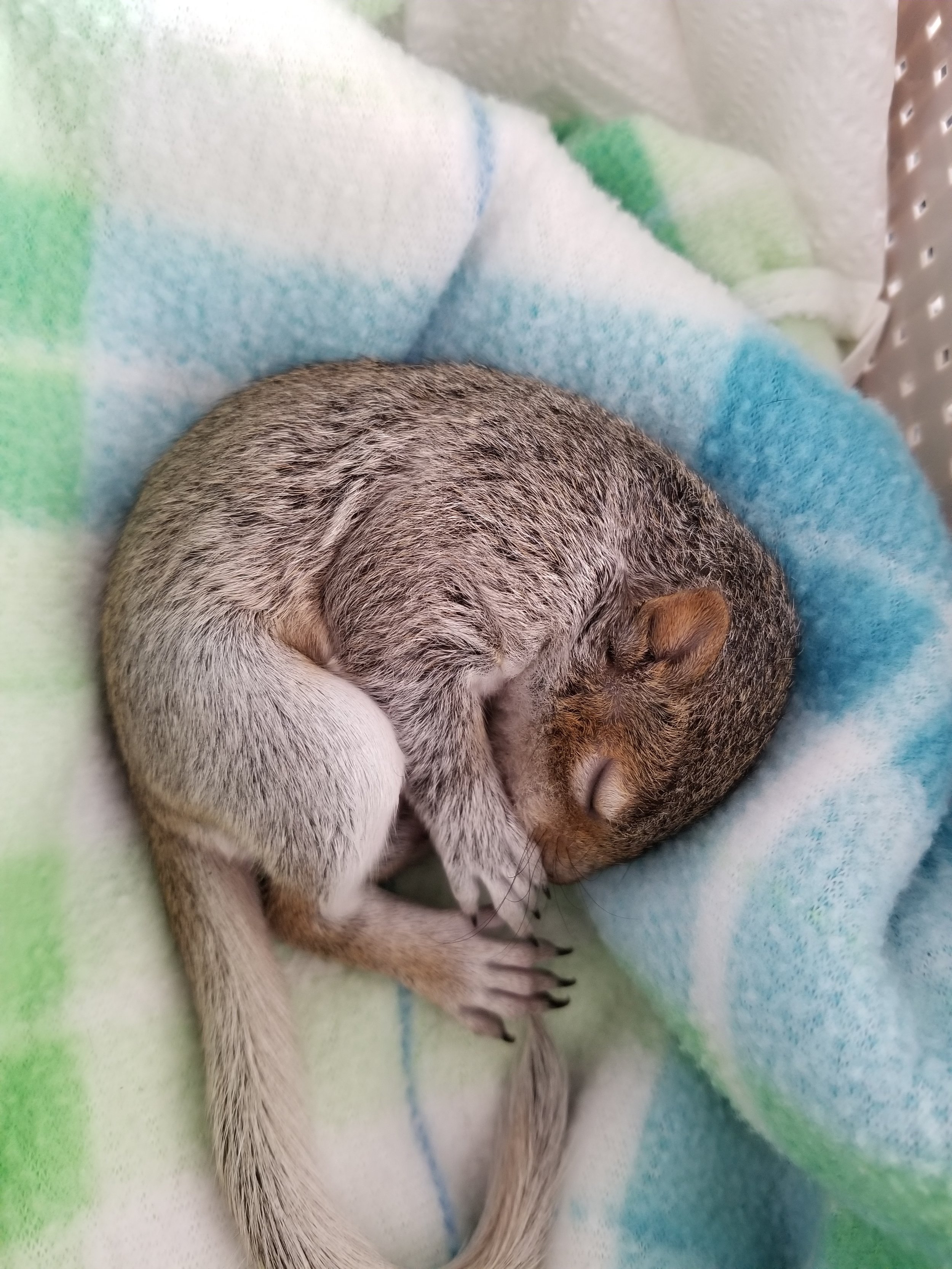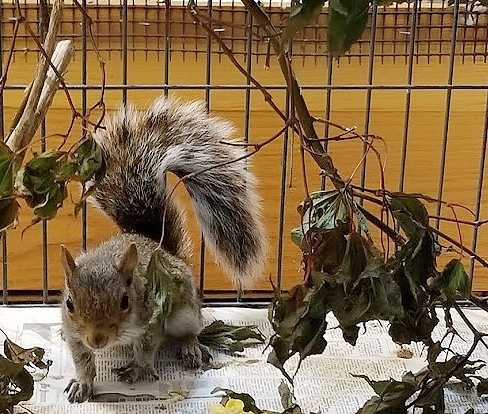I found a baby possum
Opossum mothers will usually not return for a dropped baby possum. So, if you find a baby possum on its own, and he is smaller than 9 inches (nose to butt, excluding tail) he needs to be brought to a wildlife rehabilitator. A baby opossum longer than 9 inches has left his mother and is independent.
If you find a dead adult opossum, you can check to see if there is a pouch. There may be babies within. The pouch is located in the abdomen area.
If you see babies, DO NOT remove them from the pouch or take the nipples out of their mouths. Instead, place the whole carcass into a box, and bring it to us - we will remove the babies from the dead mother.




















